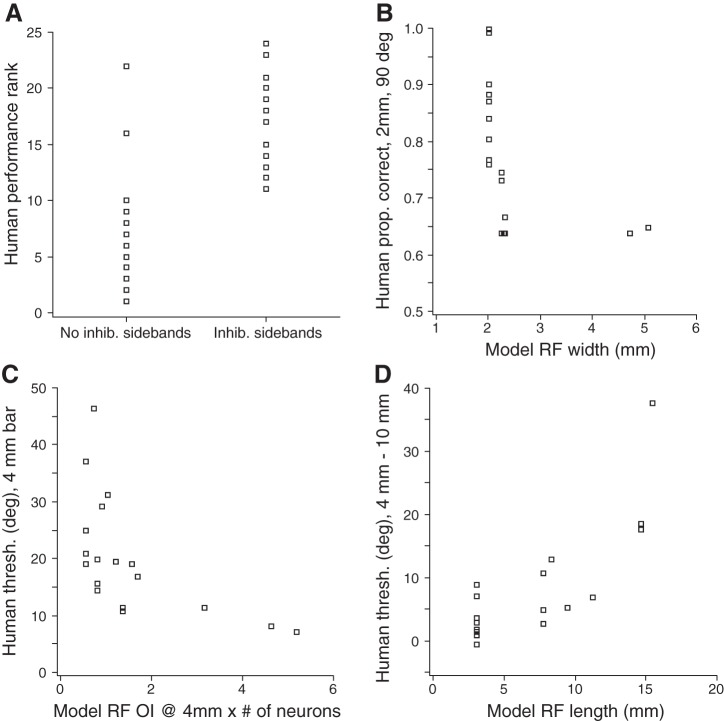Fig. 11.
Factors that may influence human performance, as revealed by the ideal observer. A: the presence of inhibitory sidebands strongly associates with better overall performance among the human participants. Participant ranking (y-axis) is from worst (1) to best (24). B: RF width correlates inversely with performance on the 2-mm bar. We plot proportion correct at 90° rather than the performance threshold, because many participants did not reach 76% correct on the 2-mm bar. C: the product of RF OI and number of neurons in the pool correlate with performance on the 4-mm bar. D: RF length correlates with the degree of performance improvement (threshold reduction) from the 4- to 10-mm bar. All 24 participants displayed (A); 18 participants fit with 3 RF orientations displayed (B–D).

